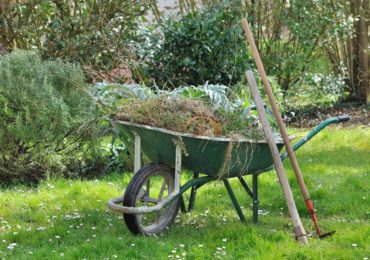 Editor’s note: These tips were adapted with permission from the brochure “Tips for Water and Rural Management for Puget Sound Rural Living” by the Puget Sound Conservation Districts, adapted from “Tips on Land and Water Management for Small Farms and Ranches in Montana,” Montana Department of Natural Resources and Conservation.
Editor’s note: These tips were adapted with permission from the brochure “Tips for Water and Rural Management for Puget Sound Rural Living” by the Puget Sound Conservation Districts, adapted from “Tips on Land and Water Management for Small Farms and Ranches in Montana,” Montana Department of Natural Resources and Conservation.
Living in the West Sound, chances are you have a nice yard or some land surrounding your property — perhaps you even have goats, horses or other animals. To help you keep your property healthy — and prevent pollution — follow the following tips.
- Establish and maintain shrubs and grasses along streams and around animal confinement areas to trap and absorb pollution-laden runoff before it reaches streams or groundwater.
- Locate manure piles, corrals and other livestock confinement areas away from wells and streams. Use water troughs or nose pumps to minimize damage to stream banks.
- Scoop, bag and dispose of pet waste in the trash.
- Cover manure piles to retain nutrients and avoid runoff. Only apply aged manure to pastures when plants are actively growing and can use this natural fertilizer. Do not spread aged manure during the wet season or on wet soils.
- Inspect your septic system regularly and according to local regulations (typically every one to three years). Pump your tank according to your inspector’s recommendation.
- Use practices that reduce soil erosion, increase water infiltration and reduce mud and runoff, such as pasture management, plantings and composting. (See tips below on using native plants.)
Dealing with Pet and Yard Waste
Unpicked pet waste washes into nearby water bodies and causes significant water pollution. Studies show that in urban environments, 20-30 percent of the bacteria in water samples come from dog waste.
Decaying pet waste in waterways consumes oxygen and releases ammonia. Pet waste also carries a lot of bacteria, viruses and parasites, such as salmonella, E. coli and giardia, which can threaten the health of humans and wildlife.
A single gram of dog waste contains an estimated 23 million bacteria. A day’s worth of waste from one large dog can contain 7.8 billion fecal coliform bacteria, enough to close 15 acres of shellfish beds!
The nutrients in pet waste also promote weed and algae growth in waters we use for swimming and fishing. Always pick up pet waste, bag it, and dispose of it in the trash.
When yard waste, including grass clippings and pruning debris, is dumped into surface waters, nutrients such as nitrogen and phosphorus are released into the water and can result in an excess of nutrients, causing noxious odors and aiding the growth of toxic algae.
Dumping yard waste into water is a violation of state law. Instead, leave grass clippings on the lawn to recycle nutrients, compost your yard waste, haul it to yard waste facilities or dispose of it through a curb-side pickup service.
Benefits of Native Plants
Native plants are one way to keep your soil healthy. They help control erosion and reduce flooding.
Other benefits of native plans:
- They’re disease resistant.
- Once established, native plants in the right locations require little maintenance and are drought tolerant.
- They provide food and habitat for birds, fish and other wildlife.
- They clean water by filtering out sediment and pollutants before they reach lakes and streams.
Native plants improve infiltration and reduce runoff, thus contributing to an overall health ecosystem. They’re also great for:
Pollinator habitat — attract native bees, hummingbirds and butterflies to your yard.
Hedgerows — increase privacy, reduce noise and dust, provide habitat, control livestock.
Rain gardens — recharge groundwater, reduce flooding, beautify yard.
Restoration projects — use in woodlots, slopes, riparian areas, construction sites.
Landscaping — beautify your yard with native trees, shrubs and groundcovers.























